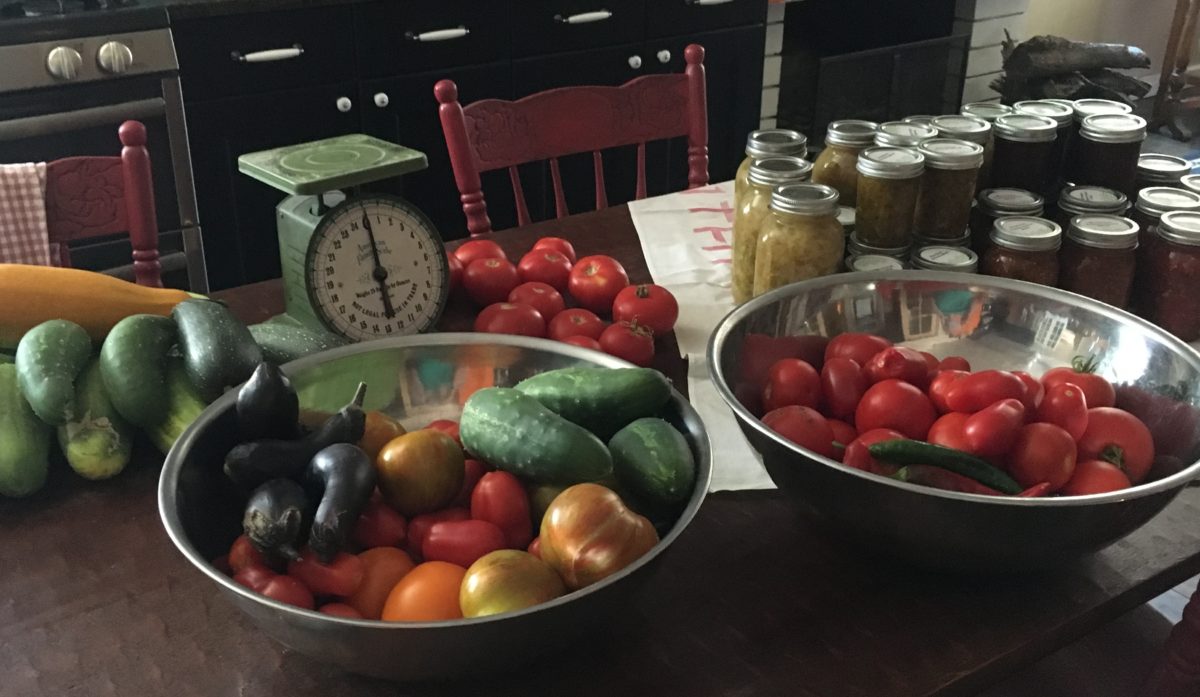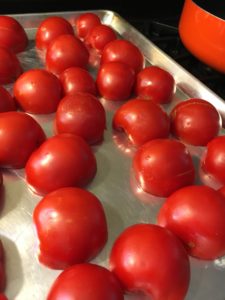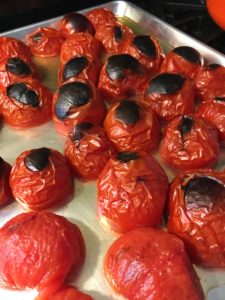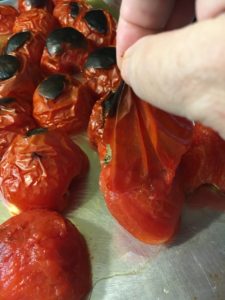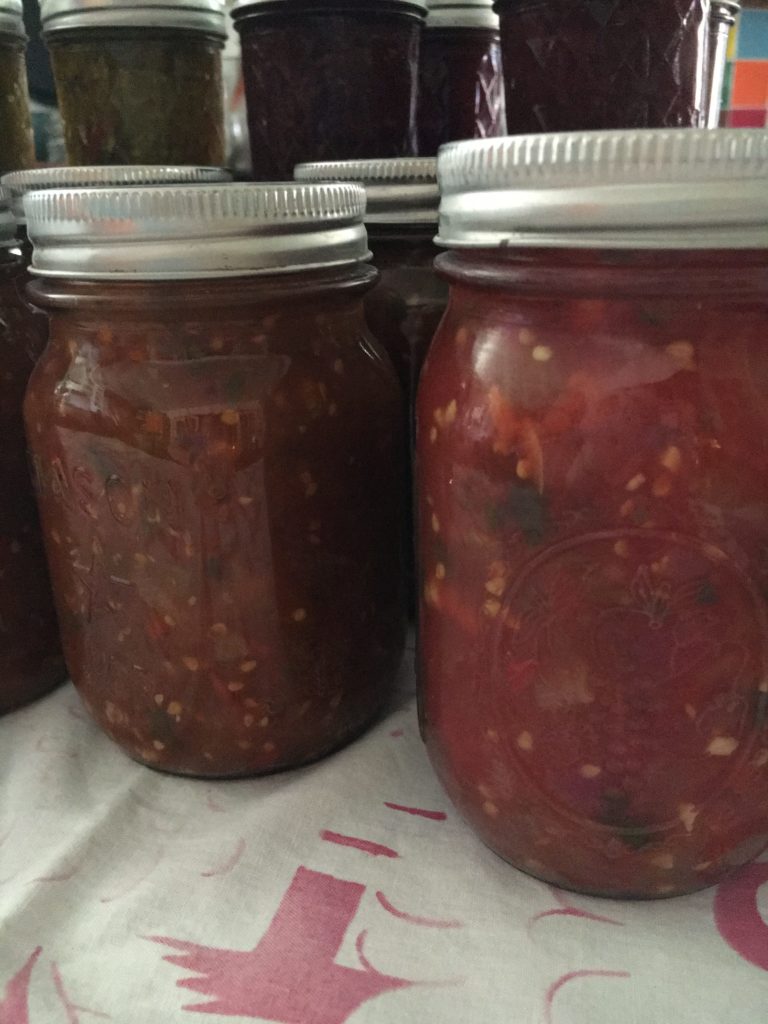This summer has proven to be the best tomato year in a long while! It has been so wonderful, especially after the extreme disappointment of last year. Our garden soil is much more dependable now, with our rich chicken-made compost. The Summer temps have been unusually mild, as well, following a long, productive Spring. We were able to produce vigorous plants, capable enough to support a bumper crop of fruit while surviving the inevitable Summer heat that we are just now, in late July, experiencing.
There is no better way to capture the taste of Summer than by canning salsa. We eat fresh salsa all year, but nothing beats the taste of fresh garden salsa in the middle of winter. My recipes vary a bit, as I use what I am able to produce in the garden. But, I am careful to follow official canning recommendations (available online) for water bath canning, and always follow a recommended formula for balancing the non-acidic add-ins (such as onions and chiles) with the amount of acid in the recipe to make the salsa safe.
What I did differently this year: I broiled my tomatoes, to peel them and to enrich the flavor. Wow, Zowie!!
This can be easily done under the broiler. It only takes about 10 minutes to char the tomatoes.
Cool under a kitchen towel for about ten more minutes, and then peel. The peels come right off, quite easily. Then chop the tomato pulp and transfer it to a large pot, carefully including all the flavorful juices, as well.
This is the best trick ever!! If you have never tried it, try it now. Really. Stop reading this and Go Try!
<><><><><>
I made two different versions of tomato salsa this year. In both cases, I used a recommended minimum of 7 cups of peeled tomatoes (and their liquid) — which began as a minimum of 5# fresh tomatoes — with a maximum of 1-1/2 cups non-acidic add-ins (such as onion and chiles). I increased the amount of acid (which is already present in the tomatoes) with vinegar and/or lime juice.
Heirloom Tomato Salsa
This is my absolute favorite type of salsa. The flavor varies, depending on the varieties of tomatoes, but it never fails to deliver a fresh, sweet reminder of the glory of the Summer’s Heirloom crop. This year the combination was Green Zebra, Tie Dye, Brandy-wine, Mortgage Lifters, Black Cherry and some beautiful orange-colored variety — perhaps a Jubilee?
ingredients
- 5-1/2# assorted Heirloom tomatoes, peeled and cut into small pieces
- chopped white onion, combined with
- several small bell peppers, jalapenos, and serrano chiles (mixture not to exceed 1-1/2 cups)
- 4 cloves garlic, chopped
- 2 teaspoons coarse Kosher salt
- 1/2 cup (packed) cilantro, leaves and stems, cut small
- 1/2 cup white vinegar
- 1/4 cup lime juice
- 6-8 drops hot sauce (my own)
All ingredients were put in a large, rather flat saucepan and simmered, until much of the liquid had cooked off and the salsa was of desired consistency. My pan was non-stick, but if yours is not, you will need to stir often to prevent salsa from sticking to the pot and ultimately burning.
No added sugar was necessary, even with the addition of the vinegar and lime juice, as my freshly-picked Heirlooms were very sweet.
Fill sterilized canning jars to 1/2-inch head space. Process in a water bath 10 minutes. Allow to cool, undisturbed, before checking seals.
Yield: made about 4 pints, plus extra for sampling
<><><><><>
Volunteer Tomato Salsa
We get volunteers, of some kind, every year in the garden. It’s always a wonderful surprise what will grow out of our home-grown compost! This year, we had two quite vigorous tomato plants, variety unknown, that proved to be our most productive of all of the tomatoes. BONUS: the salsa it made was delicious!
ingredients
- 5-1/2# Volunteer tomatoes, peeled and cut into small pieces chopped
- yellow onion, combined with
- several small poblano peppers, a guajillo, and several (each) jalapenos and serrano chiles (mixture not to exceed 1-1/2 cups)
- 4 cloves garlic, chopped
- 2 teaspoons coarse Kosher salt
- 1 cup apple cider vinegar
- 1/2 cup (packed) cilantro, leaves and stems, cut small
Cook (and process) as above. Again, no added sugar was necessary.
Yield: made about 4 pints, plus extra for sampling

